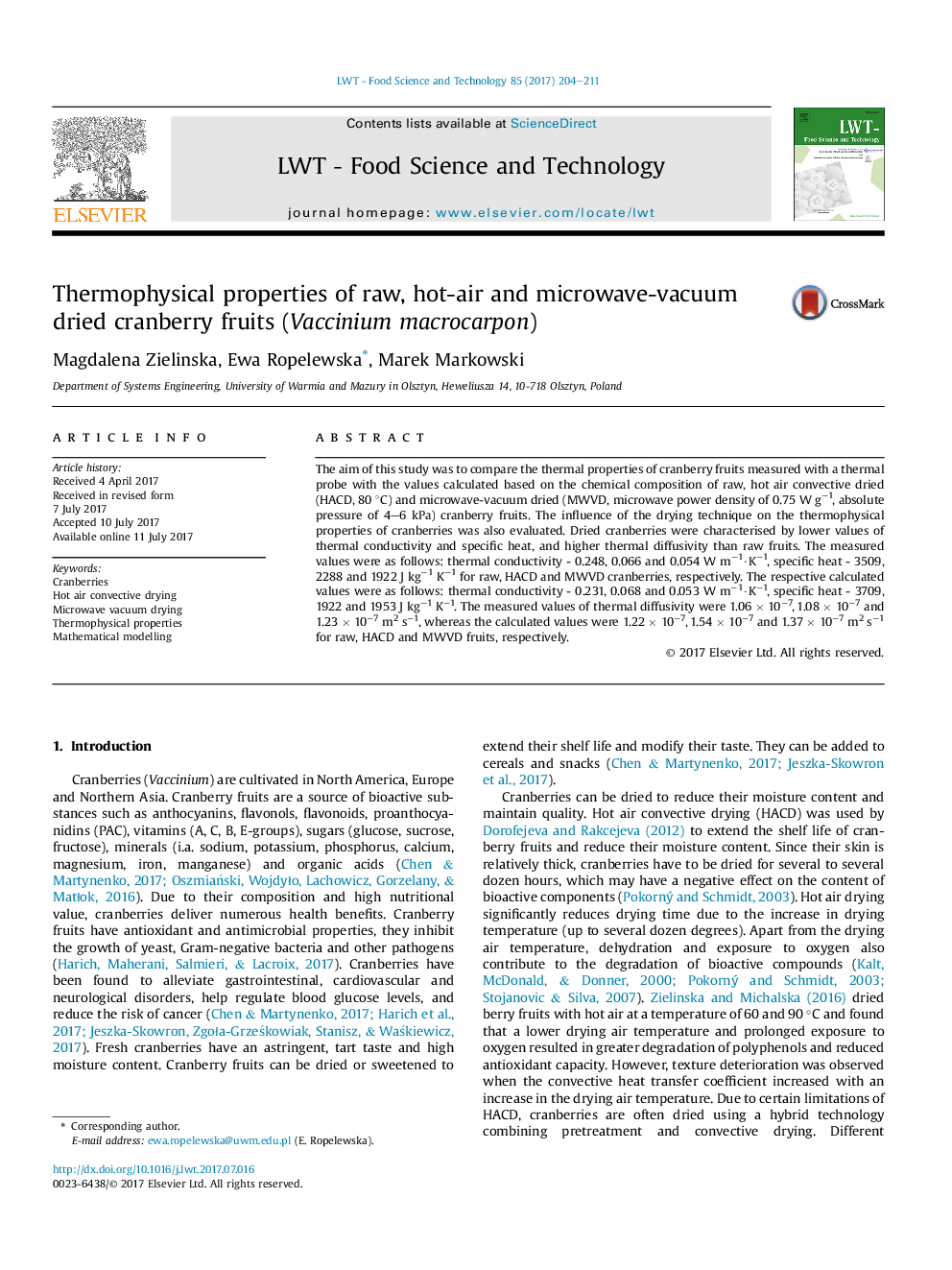| Article ID | Journal | Published Year | Pages | File Type |
|---|---|---|---|---|
| 5768451 | LWT - Food Science and Technology | 2017 | 8 Pages |
â¢Microwave-vacuum drying contributed to a shorter drying time of cranberry fruits compared with hot-air drying.â¢Thermal conductivity and specific heat were lower, and thermal diffusivity was higher in dried fruits.â¢The measured values of thermal parameters were closest to the values derived from the Parallel and ME1 models.â¢Thermal conductivity lied within the Wiener bounds.â¢Thermal conductivity was consistent with the theory for modelling heterogeneous materials.
The aim of this study was to compare the thermal properties of cranberry fruits measured with a thermal probe with the values calculated based on the chemical composition of raw, hot air convective dried (HACD, 80 °C) and microwave-vacuum dried (MWVD, microwave power density of 0.75 W gâ1, absolute pressure of 4-6 kPa) cranberry fruits. The influence of the drying technique on the thermophysical properties of cranberries was also evaluated. Dried cranberries were characterised by lower values of thermal conductivity and specific heat, and higher thermal diffusivity than raw fruits. The measured values were as follows: thermal conductivity - 0.248, 0.066 and 0.054 W mâ1·Kâ1, specific heat - 3509, 2288 and 1922 J kgâ1 Kâ1 for raw, HACD and MWVD cranberries, respectively. The respective calculated values were as follows: thermal conductivity - 0.231, 0.068 and 0.053 W mâ1·Kâ1, specific heat - 3709, 1922 and 1953 J kgâ1 Kâ1. The measured values of thermal diffusivity were 1.06 Ã 10â7, 1.08 Ã 10â7 and 1.23 Ã 10â7 m2 sâ1, whereas the calculated values were 1.22 Ã 10â7, 1.54 Ã 10â7 and 1.37 Ã 10â7 m2 sâ1 for raw, HACD and MWVD fruits, respectively.
